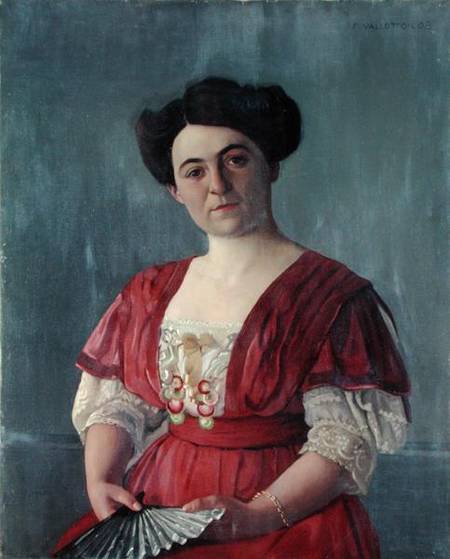From 14 September 2013 to 28 February 2014, the Hermitage Amsterdam will turn its attention to three great French artists of the late nineteenth and early twentieth centuries: Gauguin, Bonnard and Denis. In the years following the breakthrough of Impressionism, they went in search of new artistic paths. The elusive Paul Gauguin (1848–1903) was a shining example for the introverted Pierre Bonnard (1867–1947) and the theoretician Maurice Denis (1870–1943). Bonnard and Denis were briefly united with a few other artists (such as Valloton and Vuillars) under the name of Les Nabis, after the Hebrew word for ‘prophet’. These young artists explored fascinating new artistic paths. Unlike the Impressionists, who aimed primarily to capture the fleeting qualities of natural light, the Nabis emphasised colour, feeling, symbolism and imagination. Their work was quickly embraced in Paris, and in Moscow.
The wealthy Russian collector Ivan Morozov was soon charmed by their youthful talent, buying their work and offering them commissions. For instance, Morozov asked Denis to decorate the concert hall in his mansion in 1908. The exhibition will include a unique reconstruction of this exquisite interior, with seven paintings and six decorative panels: The Story of Cupid and Psyche.

Cupid in Flight is Stuck by the Beauty of Psyche, (first panel of the Story of Psyche, 1908)

Zephyr Carries Psyche to the Island of Bliss, (Second panel, 1908)

Psyche Discovers that Her Secret Lover is Cupid (third panel of the Story of Psyche, 1908)

The Vengeance of Venus, Opening the Box of Dreams of the Underworld, Sinks into Sleep, (Fourth panel, 1908)

In the Presence of the Gods, Jupiter Grants Psyche Immortality and Celebrates Her Marriage with Cupid, (Fifth panel, 1908)

Psyche's Parents Abandon Her on the Summit of the Mountain, (Sixth panel, commissioned by Ivan Morozov as an addition to the original five panels, 1909)

Cupid Carries Psyche to Heaven (Seventh panel, commissioned by Ivan Morozov as an addition to the original five panels, 1909)
Bonnard painted the monumental triptych

Méditerrannée
for the same collector. This work too will be on display in an illusionistic setting, with flat columns in front of the work enhancing the illusion of a Mediterranean view.
The work of the Nabis will be exhibited side by side with French paintings and drawings by their predecessors, contemporaries and immediate successors. With a small selection of sculptures by Auguste Rodin, Auguste Maillol and Paul Auguste Bartholomé, the exhibition will reveal the many facets of Paris’s flourishing artistic climate in the 1890s.
The term ‘Nabis’ was first used in 1889, by a group of young artists in search of a new approach to painting. They were studying together at the Académie Julian in Paris. The daring experimentalist Paul Gauguin became their inspiration, pointing them toward a new way of seeing and painting. The works on display were made between 1890 and the outbreak of the First World War.
Through their ‘flat’ style, initially lacking in traditional linear perspective, the Nabis – together with other avant-garde artists such as Van Gogh and Gauguin – opened the door to modern art. Their paintings in unmixed colours, making expressive use of form and coloration, paved the way to an art that was free and abstract. Their wide-ranging subject matter included city scenes, landscapes, religious themes, portraits and interiors. The Nabi painters used photography to test their compositional ideas, developing a photographic way of seeing. They also embraced the decorative painting of the Art Nouveau movement, making enormous decorative panels for their patrons’ buildings. In all these ways, they explored the artistic boundaries between high and low, fine and applied art.

Félix Vallotton, Woman at a Piano, 1904, oil on canvas, 43.5 x 57 cm
© State Hermitage Museum, St Petersburg

Félix Vallotton, Portrait of Georges Haassen, 1913, oil on canvas, 81.7 x 100.5 cm
Collectie Staatsmuseum de Hermitage, St.-Petersburg.

Félix Vallotton, Woman in a Black Hat, 1908, oil on canvas, 81.3 x 65 cm
© State Hermitage Museum, St Petersburg
.jpg/800px-Gauguin,_Paul_-_Sacred_Spring,_Sweet_Dreams_(Nave_nave_moe).jpg)
Paul Gauguin, Sacred Spring: Sweet Dreams (Nave Nave Moe), 1894, oil on canvas, 74 x 100 cm
© State Hermitage Museum, St Petersburg

Édouard Vuillard, In a Room, 1899, oil on cardboard, pasted on panel, 52 x 79 cm
© State Hermitage Museum, St Petersburg

Pierre Puvis de Chavannes, Woman on the Beach, 1887, oil on paper, pasted on canvas, 75.3 x 74.5 cm
© State Hermitage Museum, St Petersburg

Édouard Vuillard, Children, 1909, tempera on paper, glued onto canvas, 84.5 x 77.7 cm
© State Hermitage Museum, St Petersburg

Félix Vallotton, Portrait of Madame Haasen, 1908
© State Hermitage Museum, St Petersburg

Odilon Redon, Woman Asleep beneath a Tree, 1900-1901
© State Hermitage Museum, St Petersburg